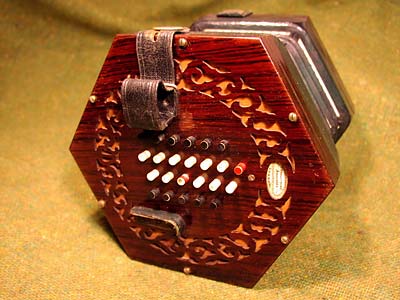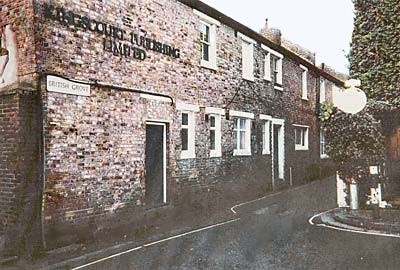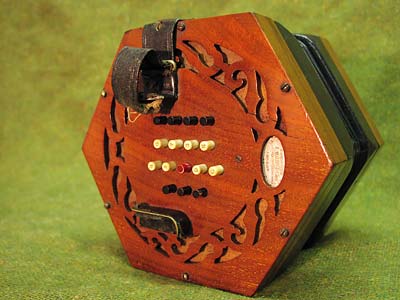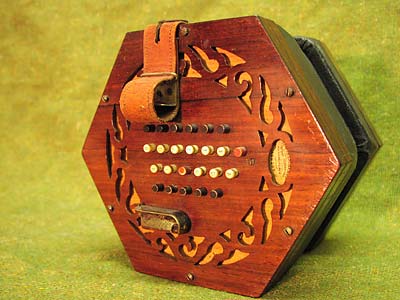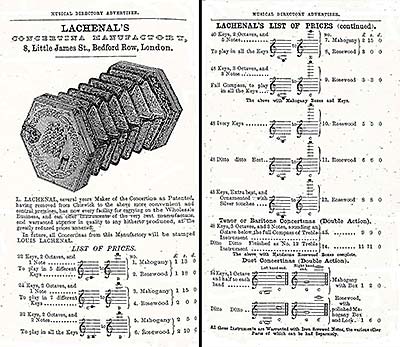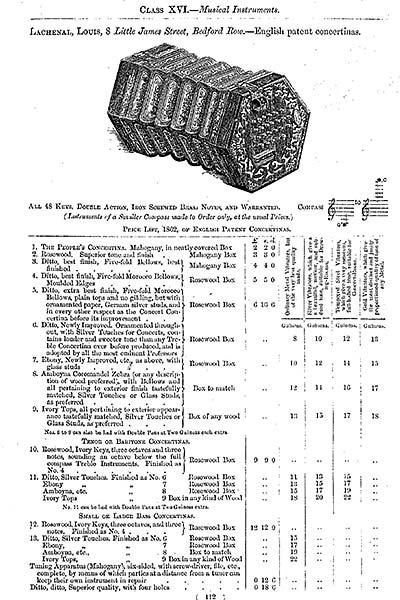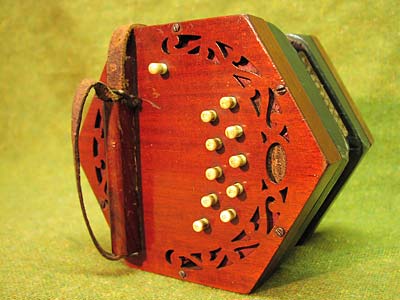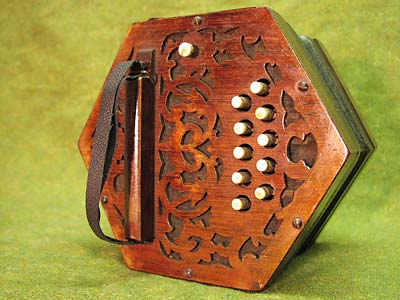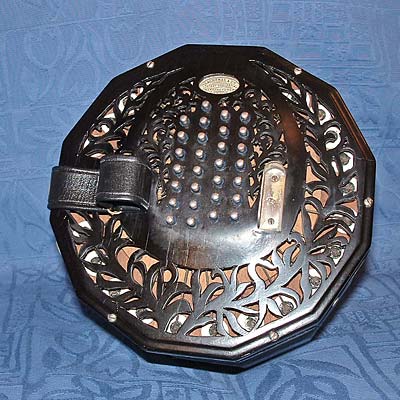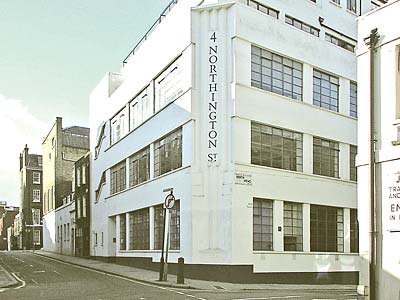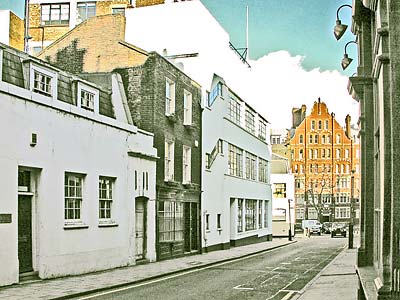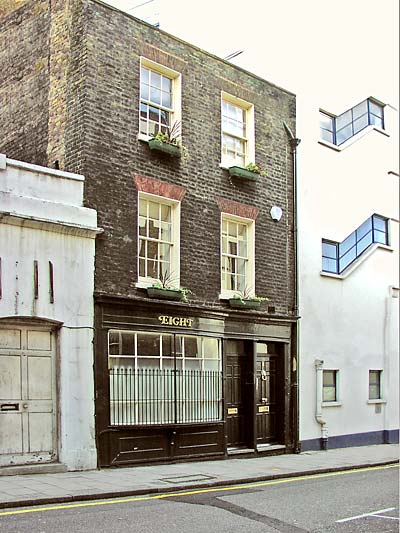 |
|
Some Notes on Lachenal Concertina
|
|
|
|
|
Posted 01 January 2005 Some Notes on Lachenal Concertina
|
|||||||||||||||||||||||||||||||||||||||||||||||||||||||||||||||||||||||||||||||||||
| Feature | Range of Dates |
| Labelled C.Wheatstone | = 1848–1866 |
| Labelled Louis Lachenal | = 1858–1873 |
| Labelled Lachenal & Co. | = 1873–1933 |
| 1. English System | |
| Fewer than 48 keys (trebles) | = 1858–1862 |
| With slots for bowing valves | = 1885/6–1933 |
| Edeophone | = 1889–1933 |
| 2. Anglo System | |
| Without trade mark | = 1862–1879 |
| With trade mark | = 1879–1933 |
II. Notes on Specific Instruments
| 1. English | |
| (a) As Louis Lachenal (1858-1873) | |
| 6119 | label missing, earliest known (CMC 72) |
| 6372 | labelled J. Russell, 80, Goswell St., Clerkenwell, London (author's collection) |
| 6599 | labelled Russell Manufacturer, Presented by the Proprietors of the Companion for Youth, 80, Goswell St., London (CMC 37) |
| 7728 | Sold by Wheatstone's, 4th April 1863 |
| 8488 | labelled Louis Lachenal, repair date 6th March 1863 (author's collection) |
| 9641 | sold by Wheatstone's, 28th July 1862 |
| 15435 | labelled Joseph Scates, Dublin (up to 1866?) (seen on eBay) |
| (b) As Lachenal & Co. (1873-1933) | |
| 28320 | New Model, probably made about 1888 (CMC 106) |
| 28821 | pre-production Edeophone, 1889 (Chris Algar) |
| 37281 | before 1895 (in Alsepti’s Method) |
| 38694 | lightweight Edeophone, like J.A.Black's, perhaps 1894 (CMC 262) |
| 2. Anglo | |
| (a) As Louis Lachenal (1858-1873) | |
| 782 | sold by Wheatstone's, 16th December 1864 (?) |
| 823 | ditto ditto |
| 829 | ditto ditto |
| 865 | labelled Louis Lachenal (CMC 360) |
| 1470 | sold by Wheatstone's, 16th December 1864 (?) |
| 1483 | ditto ditto |
| 1493 | ditto ditto |
| 2655 | labelled Louis Lachenal (author's collection) |
| 3207 | labelled Thomas Prowse (a dealer who died in 1867), 13, Hanway St., London (sold on eBay) |
| 5681 | labelled G. King, 31,North St., Manchester Sqre. (author's collection) |
| 7602 | labelled H. Journet, 43, Tottenham Court Rd., London, 1870-c.1900 (author's collection) |
| 9637 | labelled Jones & Son, 6, Cross St., Hatton Garden, London (author's collection) |
| (b) As Lachenal & Co. (1873-1933) | |
| 196865 | sold for £5.0.0, 9th January 1926 (receipt, author's archive) |
Notes
1 This article originated as a set of guidelines that I sent to Chris Algar for the Lachenal serial number dating project. However, I felt that it was potentially of much broader interest, as it contains some important new discoveries about both Louis Lachenal, Lachenal & Co., and C. Wheatstone & Co. I have, therefore, reworked it for publication, and it can stand, in the interim, in lieu of the projected Part 2 of ‘Louis Lachenal: “Engineer and Concertina Manufacturer”, Part 1’, The Free-Reed Journal, 1 (1999), 7-18 (hereafter cited as ‘Louis Lachenal’); the article is available online at http://www.concertina.com/chambers/lachenal-part1. [ Back to text ]
2 The same design would carry on as the ‘standard Lachenal model’ until the closure of Lachenal & Co. some eighty-five years later, and formed the basis for much of that company’s range of English concertinas. [ Back to text ]
3 C. Wheatstone & Co. issued a price list that year, advertising that ‘. . . a very considerable reduction in price of the various descriptions of the Concertina has been recently effected, as the subjoined list will show’. A transcription of this price list appears in Chambers, ‘Louis Lachenal’, 16-18; a copy of the original is reproduced online at http://www.concertina.com/docs/Wheatstone-Pricelist-1848-C824.pdf. For information on both the start of Lachenal’s work for Wheatstone’s and evidence that he was employing staff on behalf of that firm in 1848, see ‘Louis Lachenal’, 15. [ Back to text ]
4 The surviving nineteenth-century ledgers of C. Wheatstone & Co., including most of the sales records from the 1830s to the 1860s, production records from the 1860s to the 1890s, and two wage books from the 1840s (twelve volumes in all), were preserved from destruction for us by the late Harry Minting, who was Wheatstone’s Sales Manager at the time the company moved to the Boosey & Hawkes factory at Edgware, in 1961. All but one of these records are written in red, leather-bound notebooks, and Harry always described the set as a whole as ‘The Red Books’, seemingly the name by which they were known at Wheatstone’s. Housed for a number of years at the former Concertina Museum, Belper, Derbyshire, they are now part of the Wayne Archive at the Horniman Museum, London, where they are in the process of being digitised by Robert Gaskins; when that work is completed, they will be made available for research both on the web and on a CD-ROM (which will be available from the Museum). The surviving twentieth-century ledgers, from 1910 on (part of the Dickinson Archive), are already available in both formats; see http://www.horniman.info. (Note added June 2005: all of the red books are now on the web at that location.)
The Red Books, with the numbers given to them by Neil Wayne (and retained by the Horniman Museum), consist of the following:
- Sales Ledgers
(chronological according to date of sale, and listing names of purchasers):
- C1046—30th April 1839 to 5th April 1848;
- C1047—1st January 1851 to 23rd October 1852;
- C1048—23rd October 1852 to 21st March 1854;
- C1049—21st March 1854 to 4th April 1856;
- C1050—5th April 1856 to 4th November 1857;
- C1051—4th November 1857 to 21st October 1859;
- C1052—21st October 1859 to 30th April 1864;
- C1053—30th April 1864 to 23rd May 1870.
- Production Ledger
(written in a copy of ‘Harwood’s Diary 1864’, serially numbered by date of manufacture, with no purchaser information):
- C1054—March 1866, serial number 18061, to 22nd December 1891, serial number 21353.
- Serial Number Register
(in serial number order, listing names of purchasers; this volume, which seems not to have received a number from Neil Wayne, has been catalogued as C104a by the Horniman Museum):
- C104a—the lowest recorded Wheatstone serial number is 59, the highest, 1500, with dates ranging from 1835 to 1849; there are, however, many missing entries, especially in the earliest period.
- Wages Books
(cash books showing expenditures, both in wages and payments to suppliers):
- C1055—25th January 1845 to 1st August 1846;
- C1056—1st January 1848 to 30th June 1849.
On the set of books (subsequently cited only by their Horniman/Wayne number), see Neil Wayne, ‘The Wheatstone English Concertina’, The Galpin Society Journal 44 (1991), 144-45 (now online at http://www.free-reed.co.uk/galpin/g1.htm ); Allan W. Atlas, The Wheatstone English Concertina in Victorian England (Oxford: Clarendon Press, 1996), 146; Atlas, ‘Who Bought Concertinas in the Winter of 1851? A Glimpse at the Sales Accounts of Wheatstone & Co.’, in Music in Nineteenth-Century Britain. Nineteenth-Century British Music Studies, I, ed. Bennett Zon (Aldershot: Ashgate, 1999), 65 and n. 8; Atlas, ‘Gendering the Concertina: Women in the Wheatstone Sales Ledgers’ (forthcoming in the Research Chronicle of the Royal Musical Association and forthcoming online at http://www.concertina.com/atlas/); Chambers, ‘Louis Lachenal’, 14 and n. 36. [ Back to text ]
5 C1046. [ Back to text ]
6 A member of the Royal Society of Musicians, George Tinkler Case (1823-1892) both performed on and composed and arranged for the concertina. He was also a manufacturer in the 1850’s. In addition, he played violin in the Royal Opera orchestra (Covent Garden) and was a good enough pianist to serve as an occasional accompanist for Giulio Regondi; see Atlas, The Wheatstone English Concertina, 56-57; James D. Brown and Stephen S. Stratton, British Musical Biography (London: William Reeves, 1897; reprint: New York: Da Capo Press, 1971), 81; Betty Matthews, The Royal Society of Musicians of Great Britain: List of Members 1738-1984 (London: Royal society of Musicians, 1985); Charles Ward, ‘The English Concertina’, Musical News, 25 (21 August 1891), 511. [ Back to text ]
7 British School Lane was another, perhaps the original, name for British Grove, the name under which it is listed in the 1851 Census, and which it still bears today. It was named after the non-denominational school founded there by the British and Foreign School Society in 1832. The east side of British Grove formed the boundary between Chiswick, in the old County of Middlesex, and Hammersmith, in the County of London. It was in British Grove that Frederick Walton invented linoleum in 1863. [ Back to text ]
8 I revisited the area earlier this year, and was surprised to find that the buildings formerly at the location, occupied by Kingscourt Publishing Limited, 20, British Grove, have been demolished and that a large new commercial building is nearing completion. [ Back to text ]
9 The Rate Books were compiled twice yearly, in April and October/November. The first relevant entry appears in the Rate Book for 19th April 1853, when the occupier is listed as ‘Messrs. Wheatstone & Co.’, and the owner as ‘Themselves’; the next Book, 22nd October 1853, gives ‘Louis Lachenal’ as occupier, ‘Messrs. Wheatstone & Co.’, as owner. This suggests that Louis Lachenal was not an employee, as such, of Wheatstone’s, but rather that he was running a workshop for them on a contract basis; otherwise they would have still had their own name listed as occupier of the workshop. Lachenal’s independence would also seem to be confirmed by the entry for ‘Lachenal Louis, machinist, British grove’ (under the heading Traders, in Chiswick) in the Post Office Directory of Essex, Herts, Kent, Middlesex, Surrey and Sussex (London: Kelly, 1855); online at the website of the Digital Library of Historical Directories, http://www.historicaldirectories.org.
By 1855 there was evidently a need for more living space, as the Rate Book for 18th October shows that Wheatstone’s had also acquired the house beyond the ‘Manufactory’ as another ‘House’, though by 22nd April 1858, it had become a second ‘Manufactory’.
In the Rate Book for 12th November 1858, the name ‘Louis Lachenal’ is crossed out, and ‘Captain Bauman’ substituted as occupier at Alpha Cottage, though the status of the other two premises seems unclear; as of 25th April 1859, however, both Alpha and Omega Cottages are shown as unoccupied, though still owned by ‘Wheatstone & Co.’, with the other house being occupied by one A.G. Whichels, but with no owner listed. [ Back to text ]
10 About Wheatstone’s Hammersmith residence, Ms. Anne Wheeldon, Archivist with Hammersmith & Fulham Archives and Local History Centre, has informed me of the following in a communication of 10 February 2004: ‘The first reference to Charles Wheatstone was in the Hammersmith rate book of May 1847, when his name was entered in pencil against a property consisting of a house, garden and buildings in Lower Mall. …[He] was rated for the property until some time after October 1861 as his name was crossed through in that rate book. … The house was at the eastern end of Lower Mall near Hammersmith Bridge [in which he owned shares]. … By 1871 … the premises was known as Digby House in the census. … In 1885 Digby House was numbered 5 Lower Mall … [a new suspension bridge was built in 1887 and the intervening houses demolished, hence] In the 1891 census … Digby House … was described … as being at the corner of the new road by the side of the suspension bridge. … It was demolished around 1894 and part of a large block of flats, named Digby Mansions, was built on the site in the late 1890s’. A photograph reveals that Digby House was a five-bay, three-storey (over basement) Georgian mansion, whilst an 1865 Ordnance Survey map shows that it had an extensive garden behind it, with a rear carriageway and outbuildings (my thanks to Ms. Wheeldon for sending these, and diligently answering other questions from me). I have walked from British Grove to Lower Mall in a little over fifteen minutes. [ Back to text ]
11 The area was then still largely rural, with many market gardens supplying the London markets. It would have been much more convenient both for Wheatstone’s Conduit Street shop and most of the manufacturing staff, as well as for out-sourcing of materials, had the factory either remained in Central London (it had previously been at George Yard, Princes Street, Soho; see ‘Louis Lachenal’, 14) or moved eastwards, towards the craft district of Clerkenwell, as Louis Lachenal later did. Indeed, Lachenal suggested as much in his first advertisement, which appeared in the 1859 edition of the annual Musical Directory, Register and Almanac (London: Rudall, Rose, Carte, 1859-; hereafter MDRA): ‘L. LACHENAL … having removed from Chiswick to the above more convenient and central premises [8, Little James St., Bedford Row, London], has now every facility for carrying on the Wholesale Business …’ Little James Street is now called Northington Street, and runs between Gray’s Inn Road and Great James Street, near the junction of Theobalds Road and Clerkenwell Road. [ Back to text ]
12 As evidence for this, we have the testimony of the former Lachenal employee Tommy Williams, who was interviewed by Neil Wayne in 1968. Transcripts from this interview were published in three instalments—and under three different titles—in The Concertina Newsletter: ‘Tommy Williams’, 3 (January 1972), 5-6; ‘The Tommy Williams Interview—Part 2’, 5 (May 1972), 6-7; and ‘The Tommy Williams Story—Part 3’, 7 (August 1972), 10-12; they may be viewed online at: http://www.concertina.com/wayne/Wayne-Tommy-Williams-Interview-parts-1-2-3.pdf. An edited version appears in the sleeve notes to his LP recording, Tommy Williams—Springtime in Battersea. Free Reed Records, FRR 008 (1976). Williams stated (‘The Tommy Williams Interview’, 7): ‘Sir Charles Wheatstone, he commissioned Louis Lachenal to make them [concertinas] for him, under the name of Wheatstone’. But ‘concertina folklore’ (or anecdotal evidence) has long held that Lachenal ‘… left the house of Wheatstone, taking with him … it is alleged, a complete set of concertina-making tools!’ (Neil Wayne, ‘An Outline History of the Concertina and Related Instruments’, The Concertina Newsletter 4 [no date], 11), or ‘The story goes that Louis Lachenal, who had been employed by the Wheatstone company, left to set up his own business (possibly taking some of Wheatstone’s tools, and even some employees) …’ (David Aumann, ‘Lachenal Concertina Production’, in the concertina.net – Buyer’s Guide, online at http://www.concertina.net/guide_lachenal.html. However, Lachenal’s Last Will and Testament, made on 8th May 1856, while he was still living at Alpha Cottage, British School Lane, left ‘all my stock in trade, plant, machinery, working tools and implements. . .carts and carriages. . . to my dear wife Françoise Marie Elizabeth Lachenal’, thus suggesting that the machinery, tooling, and even the means of transport were all owned by him, and confirming that he was no mere employee of Wheatstone’s, but rather worked for them as an independent contractor, with his own equipment and staff. For information on what is known about Louis Lachenal as a watchmaker and engineer, see Chambers, ‘Louis Lachenal’, 10-16. [ Back to text ]
13 British Patent No. 10,041, 8 February 1844: ‘Improvements on the Concertina and other Musical Instruments’, in which the Sounds are Produced by the Action of Wind on Vibrating Springs’; online at http://concertina.com/wheatstone/Wheatstone-Concertina-Patent-No-10041-of-1844.pdf. [ Back to text ]
14 Henry Joseph (‘Harry’) Crabb (1911-1981) told Richard Carlin that ‘… Wheatstone … asked my grandfather [John Crabb] to make the woodwork … and Lachenal was a French [sic, read Swiss] engineer … they all got together … and they started making concertinas. Well my grandfather was, until the patent ran out, with Wheatstone, and Lachenal had made all the tools for the plant, and he started on his own. … my grandfather went with Lachenal … and then he started with Nickolds as a partnership.’ And that ‘My grandfather’s brother [Charles Crabb] worked for Lachenal, all his life …’. See Carlin, ‘An Interview with Harry Crabb’, in English Concertina (New York: Oak Publications, 1977), 54-56.
John Crabb (c.1826–1903) first appears at the address in question, 12, British School Lane, Chiswick, in the Rate Book for 17th April 1856. Interestingly, his name seems to have been added as a late entry, in different ink, the house having earlier been marked as unoccupied. He was still living there on 22nd April 1858, but an Indenture (Numbered 960, preserved at the Greater London Record Office, Ref. MDR 1858 BK9 PTS1-2) between ‘John Crabb, 3, Spring Street, Clerkenwell … Cabinet Maker, on the one part, and James Richard Eden … Plumber’, on the other, shows that he sold the lease of the house on 2nd August 1858. He seems to have first moved to the area between the christening of his second daughter, Emma Louisa Crabb, at St. Andrew’s, Holborn, on 18th April 1853, and the birth of his first son, John Charles Crabb, at 9, Park Cottages, Hammersmith (now Ravenscourt Gardens, a short walk from British Grove), on 20th October that same year. Their fourth child, Henry Thomas Crabb (d.1930, father of ‘Harry’ Crabb, grandfather of Neville and Geoffrey Crabb), was born at 12, British Grove, Chiswick, on 17th July 1856. Moreover, there is evidence to confirm that John Crabb’s brother, Charles (1835-1885), was also working for Louis Lachenal in Chiswick, for he married Elizabeth Matilda Nichols, from Turnham Green, Chiswick, at the Episcopal District Chapel of St. Peter, in Hammersmith (now St. Peter’s Church, Black Lion Lane, only two streets from British Grove), on Christmas Day 1855. Both gave their ‘Residence at the time of Marriage’ as ‘Hammersmith’, and since the marriage was ‘after banns’; they were evidently both living in the district at the time. Also, he appears to have become a concertina maker in 1853, as his firm’s advertisement in ‘Professor’ John Hill Maccann’s The Concertinist’s Guide (1888) claims ‘for 35 years concertina maker’ (online at: http://www.concertina.com/maccann-duet/Maccann-Concertinists-Guide.pdf). [ Back to text ]
15 C1051. [ Back to text ]
16 Lachenal’s advertisement in the 1859 edition of MDRA takes the form of a double-page ‘List of Prices’ for English concertinas, with twelve models of treble starting at £1.13.0 (for a 22-key in mahogany) and rising to £8.8.0 (for a 48-key in rosewood, with silver buttons), two models of baritone, at £9.9.0 or £11.11.0, and Duet Concertinas for £1.2.0 (mahogany) and £1.6.0 (rosewood). The advertisement states: ‘L. LACHENAL, several years Maker of the Concertina as Patented, having removed from Chiswick to the above more convenient and central premises [8, Little James St., Bedford Row, London], has now every facility for carrying on the Wholesale Business, and can offer Instruments of the very best manufacture, and warranted superior in quality to any hitherto produced, at the greatly reduced prices annexed … In future, all Concertinas from this Manufactory will be stamped LOUIS LACHENAL’. Finding this advertisement was the first clue that there had been a factory in existence at Chiswick. And though it avoids actually stating that he had been manufacturing for Wheatstone’s there, it strongly hints at just that by using the phrase ‘Maker of the Concertina as Patented’ (by Charles Wheatstone).
Messrs. Wheatstone & Co.’s advertisement in the same directory also occupies two pages, but it is principally for harmoniums, an instrument that was becoming both more fashionable and more important for them by the late 1850s (continuing into the 1860s). Their list of concertinas takes up only one third of one page and states (as it had also in 1858): ‘Messrs. WHEATSTONE and Co., having completed their machinery for manufacturing CONCERTINAS of the following scales of notes, are now enabled to offer them to the Public at the low prices annexed’. They listed only six, inexpensive models starting with the same 22-key (as Louis Lachenal) in mahogany, but for a price of three shillings more at £1.16.0, and rising to a 32-key in rosewood at £3.3.0 (thirteen shillings more), though they also mentioned ‘Concertinas, with full compass (48 Keys) from 4 to 12 Guineas’. [ Back to text ]
17 C1053. This is evidenced both by the different construction of those instruments and by the addition of the phrase ‘Twenty Years Maker of Wheatstone & Co.’s Patent Concertinas’ to Lachenal’s advertising in MDRA, 1867 (et seq.) and elsewhere. [ Back to text ]
18 Related to the Wheatstone family by marriage, Edward Chidley (1830-1899) and his older brother Rock (1825–1894) had worked for Wheatstone’s in the 1840s. They appear in the 1845-1846 Wage Book (C1055) as ‘Chidley and brother’, and both became concertina makers in their own right. According to Kenneth Vernon Chidley (1892-1964), a later director of Wheatstone’s: ‘My grandfather, Edward Chidley, purchased the firm from C. Wheatstone in 1860, and when he died in 1899 was succeeded by his son, also Edward Chidley, who died in 1941. I entered the business in 1906 and have managed production since 1924—and am still in harness!’ (quoted in Accordion Review, 4/6 [June 1950], 21). However, Charles Wheatstone’s younger brother, William Dolman Wheatstone (chr. 9th March 1804) appears to have run the business until his death, at 20, Conduit Street, on 30th August 1862. (The firm had borne his name alone in directory entries since 1848, although the concertinas continued to be labelled C. Wheatstone & Co. throughout the period. His Death Certificate gives his occupation as ‘Concertina & Harmonium Manufacturer and Inventor’.) Neil Wayne has suggested that Charles Wheatstone returned ‘… to a more active involvement in the concertina firm after the death of his brother … [he] appears to have returned to concertina-making and to research on “new” free-reed instruments in later life ….’ (‘The Wheatstone English Concertina’, 121). Finally, Edward Chidley is listed as a concertina maker in his own right, at 28, Store Street, Bedford Square, London, in the period 1861-1870 (Neil Wayne, Concertina Book—Final Edit [unpublished typescript, 1986], 65, where the street name is given incorrectly as ‘Stone St.’). Certainly, Chidley was living at 29, Conduit Street, close to the Wheatstone shop, by April 1871, as he was enumerated there for the Census. In all, I would suggest that 1870 is perhaps a more likely date for his acquisition of C. Wheatstone & Co. (though more work needs to be done on the subject). [ Back to text ]
19 See (among others) the notice in Musical Opinion & Music Trade Review Directory of the Music Trade of the United Kingdom 1903, 227. [ Back to text ]
20 While Louis Lachenal was manufacturing his ‘mass-produced’ models of treble concertina exclusively for Wheatstone’s—between about April 1848 (the 1490s series) and the end of July 1858 (the 10660s series)—there appear to have been some 9,170 serial numbers, but I do not believe that all of these will be found to have been allocated to instruments during that time. Moreover, other models of treble, as well as all the tenors, baritones, and basses, were still being made by hand (though using reeds supplied by Lachenal, except for the basses, which used French harmonium reeds). In addition, though there are potentially more than 9,000 Red Book entries during this period (allowing for a missing volume, between April 1848 and January 1851), not all of them would have been for sales of new concertinas, as numerous entries in the surviving ledgers are for instruments that were lent, hired, or sold second hand, sometimes several times. [ Back to text ]
21 Neil Wayne sold his Concertina Museum Collection to the Horniman Museum, London, in 1996. A photostat catalogue of the collection was privately published: Neil Wayne, The Concertina Museum—Incorporating the Wheatstone Collection of Scientific Apparatus: An Illustrated Catalogue, Checklist and Historical Introduction (The Free Reed Press, 1986). All further references to CMC numbers are to instruments from that catalogue. [ Back to text ]
22 ‘Cooke, J. Major’s Corner, Ipswich’, is entered, as a Music Seller in MDRA, 1864. [ Back to text ]
23 C1050. [ Back to text ]
24 The International Exhibition of 1862, Illustrated Catalogue of the Industrial Department, British Division, Vol. II. (Class XVI.—Musical Instruments), 112. [ Back to text ]
25 Bill La Chenal and his mother, Dorothy (“Dee”), whom I visited on 15th March 2000. Bill is a great-grandson of Louis Lachenal; his grandfather was Louis’ youngest son, Alexander (born 27th October 1861, a Crown Agent and civil engineer), about whom I did not know when I wrote ‘Louis Lachenal’, and his father was Alexander’s youngest son, Ronald. The form of the family name was changed to ‘La Chenal’ in England at the time of the First World War, in order to appear more French (and more importantly at that time, less German!). Another branch of Alexander’s family, in the United States, uses the original form, ‘Lachenal’. [ Back to text ]
26 C1052. [ Back to text ]
27 Significantly, Anglos are missing from their 1862 Exhibition Price List. [ Back to text ]
28 Exhibition Catalogue, 114. [ Back to text ]
29 The entry for Rock Chidley in the Exhibition Catalogue, 96, simply states: ‘Harmoniums and concertinas’, but that he was already manufacturing Anglos is attested by his having published a tutor, Chidley’s Instructions for the German Fingering Concertina [1858], which promoted the instruments: ‘These instruments being made by English workmen under the superintendence of R.C. … will be found very superior in tone to those generally sold. …’. [ Back to text ]
30 C1052. [ Back to text ]
31 C1053. [ Back to text ]
32 Post Office London Directory 1863. [ Back to text ]
33 Post Office London Directory 1874. [ Back to text ]
34 ‘The Tommy Williams Interview’, 7. [ Back to text ]
35 RG 10/384, folio 18, p. 29. [ Back to text ]
36 RG 11/210, folio 13, p. 22. [ Back to text ]
37 British Patent No. 8290: ‘Improvements in Concertinas’, applied for 8th July 1885, granted 8th April 1886 to James Alsepti and Richard Ballinger; the patent is available online: http://www.concertina.com/patents/Alsepti-Ballinger-No-8290-of-1885.pdf. On Alsepti and the view that the bowing valves are somewhat tantamount to charlatanry, see Atlas, Contemplating the Concertina, 27-31; for new information about the biography of Alsepti, see Atlas, ‘Signor Alsepti and “Regondi’s Golden Exercise”,’ Concertina World, supplement to No. 426 (2003), 1-8, which shows that his real name was almost certainly ‘Alsept’ (online at: http://www.concertina.com/atlas/regondi-golden-exercise.htm). [ Back to text ]
38 With its radial internal design, the ideal shape for an English-style concertina is circular, but for practical purposes it tends towards that of a ‘squared circle’; while the traditional hexagon is the easiest to make, the octagon is better, and the dodecagon is nearest to the ideal, allowing longer-scale reeds to be used and for a larger volume of air to be contained in the bellows. [ Back to text ]
39 These include the design of the fretwork, long thumb straps with top screws (like a regular concertina) instead of the usual short straps with clips, and an ordinary paper maker’s label, not an engraved nickel-silver one; hence it is not badged as an Edeophone (was the name even in use when it was made?). [ Back to text ]
40 According to Chris Algar, communication of 29th April 2004. [ Back to text ]
41 Wayne also gives the number as 28694 in the same catalogue entry, but he has told Chris Algar that he believes this is an error (communication from Chris Algar, 28th April 2004). [ Back to text ]
42 In Musical Opinion & Music Trade Review (1 January 1895), Correspondence, 222. [ Back to text ]
43 ‘The Tommy Williams Story’, 11 [ Back to text ]
44 ‘Introducing our New Feature Devoted to the Concertina,’ Accordion Review, 4/4 (April 1950), 22. The article was ‘compiled with information kindly supplied to us by K.V. Chidley, Esq., of Messrs. C. Wheatstone & Co., Ltd. …’. [ Back to text ]
45 For a few years, in the late 1930s and early 1940s, Wheatstone’s used a rubber stamp with the wording ‘(incorporating LACHENAL & CO.)’, which appeared immediately after ‘C. Wheatstone & Co.’ on their letterhead and elsewhere. An example of this is the receipt for a 36-key Anglo, 51406, sold on 26th Sept. 1941, and an associated letter dated 20th August 1941 (sold on eBay). [Another example is on the cover of a pricelist for duet concertinas, on the web at http://www.concertina.com/pricelists/wh-duet/Wh-Pricelist-Duet-c1936.pdf.] [ Back to text ]
46 ‘The Tommy Williams Story’, 12. [ Back to text ]
47 The evidence from Wheatstone’s seems to indicate the contrary. Steve Dickinson, the present owner of C. Wheatstone & Co., believes that much of the tooling now in his possession originated with Lachenal’s, having been refettled, and modified by Wheatstone’s in the mid 1930s. Further, John Wicks, who worked for the flute makers Rudall, Carte & Co. and shared premises with Wheatstone’s during the 1950s, told me that he remembered Wheatstone’s having a different drill press for every size of hole (a mass-production technique, saving a lot of set-up time), until Geoffrey Hawkes, Director of Boosey & Hawkes, came along and scrapped them, in the name of economy!
From 1934 on (33000 series), Wheatstone’s instruments began to change, becoming progressively cheaper in their construction and materials, as the firm seemingly embraced the mass-production ethos and technology of their former rivals. An example of that technology is the pattern-following router, for cutting the tapered, dovetailed slots for the reed frames in the pan board, which is still in use by Steve Dickinson. One can see it used at Wheatstone’s factory in Duncan Terrace, Islington in the British Pathe newsreel Concertina Factory (a.k.a. Concert in a Factory), filmed on 3rd April 1961: online at http://www.britishpathe.com (this link will automatically search the database for ‘concertina factory’). Not surprisingly, under the circumstances, the router can cut slots in six, eight, or twelve-sided pans. It was as a result of having Lachenal’s tooling that Wheatstone’s started to build some Edeophones, starting with a batch of three Anglos numbered 33301-33303, in July 1934. On Wheatstone’s Edeophones, see Neil Wayne, Margaret Birley, and Robert Gaskins, ‘A Wheatstone Twelve-Sided “Edeophone” Concertina with Pre-MacCann Chromatic Duet Fingering’, The Free-Reed Journal, 3 (2001), 3-17 (a revised and expanded version is online at http://www.concertina.com/frj-wh-edeo/; see also, Wayne, ‘Wheatstone 12-Sided Duete [sic]’, online at http://www.concertina.info/tina.faq/images/wayne.htm. [ Back to text ]
48 This is the earliest reference in the ledgers to a concertina being a ‘Lach’, that is, one of the unfinished Lachenal stock of instruments eventually completed by Wheatstone’s. The Wheatstone model number 51 denoted a 20-key Anglo with mahogany ends; a 26-key rosewood-ended Wheatstone should have been described as a model 55B. [ Back to text ]
49 The Accordeaphone is a large, square, triple-reeded English concertina covered in blue pearloid, with translucent red plastic buttons. It was developed by Lachenal’s in an attempt to compete with the piano accordion, which became extremely popular in the 1930s, with many concertina players finding i t advantageous to take up the newer, more fashionable, instrument. Very few Accordeaphones were made, but a rare example, made for a player named Sid Ive and now owned by Chris Timson and Anne Gregson, can be seen online: http://www.concertina.info/tina.faq/images/accphone.htm. [ Back to text ]
50 ‘The Tommy Williams Interview’, 7. [ Back to text ]
51 Lachenal’s address changed from 8, to 4, Little James Street in the Post Office London Directory 1867, though a later (undated) price list indicates that they occupied the premises at both 4 & 6, Little James Street. [ Back to text ]
Author
Have feedback on this article? Send it to the author.
Reprinted from the Concertina Library
http://www.concertina.com
© Copyright 2000– by Stephen Chambers
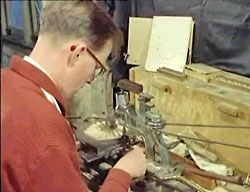
at Wheatstone factory
in Islington, 1961
Contents
- Some Notes on Lachenal Concertina Production and Serial Numbers
- Table I. A Quick Guide to Dateable Features of Lachenal Concertinas
- Table II. Notes on Specific Instruments
- Notes
This original version of this article appeared in
Papers of the International Concertina Association (PICA),
Vol. 1 (2004), pp. 3–23. PICA is published by
The International Concertina
Association (ICA)
and
The Center for the Study
of Free-Reed Instruments (CSFRI)
at The Graduate Center of The City University of New York.
© 2004 Stephen Chambers.
- Original publication
of this article in PDF format
- Other articles
by Stephen Chambers
Links to related documents
-
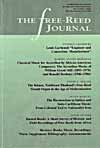 Louis Lachenal: "Engineer and Concertina Manufacturer" (Part 1)
Louis Lachenal: "Engineer and Concertina Manufacturer" (Part 1)
- by Stephen Chambers
- Discussion of the sources of information available about Louis Lachenal, his early career and immigration to England, and his involvement with the design and manufacturing engineering of Wheatstone & Co. concertinas up to the year 1848. As published in The Free-Reed Journal, Vol. 1 (1999), pp. 7-18. There is also a scanned copy of the original publication in PDF format.
- Posted 15 January 2004
- » read full article
- » read full article in pdf
-
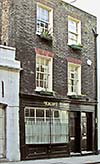 Lachenal & Co.
Lachenal & Co.
- Directory
- Concertina Library directory of all information on this website about Lachenal & Co.
- Posted 01 January 2005
- » go to directory
-
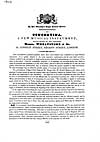 “The Concertina, A New Musical Instrument”
“The Concertina, A New Musical Instrument”
- by Wheatstone & Co.
- Promotional brochure and price list, dated 1848. 2 pages. This copy is in the collection of the Horniman Museum, no. C824.
- Posted 15 January 2004
- » read full document in pdf
-
 Wheatstone Concertina Ledgers on the Web
Wheatstone Concertina Ledgers on the Web
- by the Horniman Museum
- Historical business records from C. Wheatstone & Co. are held at the Library of the Horniman Museum in London. The earliest ledgers from the Wayne Archives contain company sales records from the late 1830s to the 1860s (though with some large gaps) along with production records from the 1860s to the 1890s and some early records of wages and other payments. Later ledgers from the Dickinson Archives contain production records from 1910 to 1974, again with some gaps. All known ledgers have been digitized (some 2,300 pages in total) and made available free on this website for private research.
- Posted 15 April 2003; Updated 15 June 2005
- » go to website
-
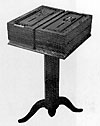 The Wheatstone English Concertina
The Wheatstone English Concertina
- by Neil Wayne
- Survey article covering the Wheatstone English Concertina, the only published source for much of Neil Wayne's path-breaking research. As published in The Galpin Society Journal 44 (1991), 117-149. (The online version does not yet perfectly match the printed version.)
- Posted 01 January 2005
- » go to website
-
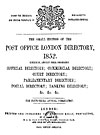 Historical Directories Searchable Digital Library
Historical Directories Searchable Digital Library
- University of Leicester
- A digital library of local and trade directories for England and Wales, from 1750 to 1919. It contains high quality reproductions of many comparatively rare books, essential tools for research into local and genealogical history
- Posted 01 January 2005
- » go to website
-
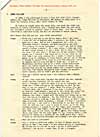 The Tommy Williams Story
The Tommy Williams Story
- by Neil Wayne
- Interview with Tommy Williams, Maccann Duet concertinist and former Lachenal employee. Published in three parts in Free Reed: The Concertina Newsletter, 3 (January 1972): 5–6; 5 (May 1972): 6–7; and 7 (August 1972): 10–12.
- Posted 15 November 2001; last updated 15 January 2004
- » read full document in pdf
-
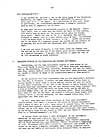 An Outline History of the Concertina and Related Instruments
An Outline History of the Concertina and Related Instruments
- by Neil Wayne
- Published in The Concertina Newsletter, No. 4 (no date): 10-12.
- Posted 01 January 2005;
- » read full article in pdf
-
 Improvements in the Action of the Concertina, &c. by Vibrating Springs (1844)
Improvements in the Action of the Concertina, &c. by Vibrating Springs (1844)
- by Charles Wheatstone
- British Patent No. 10041 of 1844, Specification (7 August 1844) with eighteen figures. 24 pages. "Improvements in the Action of the Concertina, &c. by Vibrating Springs". The most important of the concertina patents, establishing the characteristic features of the English concertina.
- Posted 15 November 2001
- » read full document in pdf
-
 The Concertinist's Guide
The Concertinist's Guide
- by John Hill Maccann
- The Most Simple Modern Methods; How to Play Correctly, With or Without a Tutor 8vo. London: Howard & Co., 1888. Images from a microfilm of a copy at the Bodleian Library, replacing a British Library copy destroyed in World War II. (Former British Library shelfmark D-7808.c.14.(14.), replaced by British Library microfilm Mic.A. 10532(4), Bodleian Shelfmark 17426 e 3(2).) Also a full transcription which is searchable in the Adobe PDF reader. 50 pages.
- Posted 15 November 2001
- » read full document in pdf
-
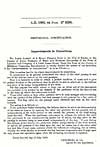 Improvements in Concertinas (1885)
Improvements in Concertinas (1885)
- by James Alsepti and Richard Ballinger
- British Patent No. 8290 of 1885, Provisional Specification (08 July 1885) and Complete Specification (08 April 1886) with two figures. 5 pages. The “bowing valve” patent. These valves were for English concertinas, providing a feature not present in the Wheatstone designs, and were promoted by Lachenal.
- Posted 22 December 2003
- » read full article in pdf
-
 Signor Alsepti and “Regondi’s Golden Exercise”
Signor Alsepti and “Regondi’s Golden Exercise”
- by Allan Atlas
- Discussion and explanation with new fingering of a celebrated excercise from James Alsepti's English tutor, published by Lachenal c. 1895, with the explanation “The following exercise, which has never before been published, was taught to Signor Alsepti by Regondi. It is very difficult for all instruments, especially the Concertina, and to thoroughly master it with the correct fingering &c. will enable the Pupil to play passages in all keys.”. As published in Concertina World 426 supplement (2003) pp. 1-8.
- Posted 22 December 2003
- » read full article
-
 Concertina Pricelists
Concertina Pricelists
- collected by Chris Algar
- A unique collection of nearly 40 pricelists for vintage concertinas, mostly found in old concertina cases. From internal evidence it is possible to date the Wheatstone pricelists with more or less accuracy, but the Lachenal pricelists and others from dealers still have some uncertainty in dates.
- Posted 07 March 2005
- » go to directory
-
 The Wheatstone Factory in Islington, 1961
The Wheatstone Factory in Islington, 1961
- by British Pathe Newsreels
- Concertinas are made and played at a factory in Islington, 03 April 1961. From newsreel "Colour Pictorial 327", 1961, Pathe Film ID 137.02. Available for free preview at reduced quality at the British Pathe website. Original title: "Concertina Factory (aka Concert in a Factory)".
- Posted 01 January 2005
- » go to website
-
 A Wheatstone Twelve-Sided 'Edeophone' Concertina with Pre-Maccann Chromatic Duet Fingering
A Wheatstone Twelve-Sided 'Edeophone' Concertina with Pre-Maccann Chromatic Duet Fingering
- by Neil Wayne, Margaret Birley, and Robert Gaskins
- A duet concertina (serial no. 35074) with a unique fingering arrangement, made by Wheatstone in 1938, turns out to be a realization of a design from Wm. Wheatstone's patent of 1861. The instrument is twelve-sided, a Registered Design feature of Lachenal & Co., and it turns out to be one of at least sixteen twelve-sided instruments made by Wheatstone between 1934 and 1941. The instrument is now in the collection of the Horniman Museum, London. As published in The Free-Reed Journal 3 (2001): 3-17. This HTML version of the article adds a number of additional photographs and active links to many of the sources cited in the published article. Updated 15 August 2003: Footnote 11 updated to record that Randall C. Merris has located instrument serial #33301, another of the set of three twelve-sided 40-key Anglos.
- Posted 15 November 2001; last updated 15 August 2003
- » read full article
- » read original article (without updates or additions) in pdf
-
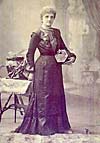 Marie Lachenal: Concertinist
Marie Lachenal: Concertinist
- by Faye Debenham and Randall C. Merris
- New photographs, genealogical data, and information about Marie Lachenal, eldest of Louis Lachenal’s daughters, and about her family life as the wife of the photographer Edwin Debenham. First published in PICA [Papers of the International Concertina Association], Vol. 2 (2005), pp. 1–17. The web version adds large colour photographs and additional information which has been discovered since the text went to print.
- Posted 15 November 2005
- » read full article
-
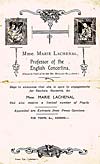 Marie Lachenal Announcement (c. 1900)
Marie Lachenal Announcement (c. 1900)
- by Marie Lachenal
- Announcement advertising the availability of Marie Lachenal for performances and lessons, with numerous press clippings listed. Discussed in Faye Debenham and Randall C. Merris, "Marie Lachenal: Concertinist".
- Posted 15 November 2005
- » read full document in pdf
Send this page to a friend.
This page was last changed | |
|
© Copyright 2000– by Robert Gaskins |
